News
Sharks and rays high on CITES #CoP17 agenda
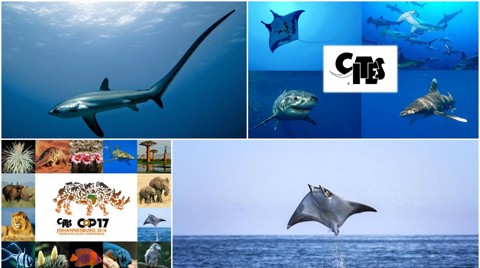
South Africa, home to one quarter of the world’s 400+ shark species, will this month host the triennial meeting of the World Wildlife Conference where strengthened protection for sharks and rays will again be high on the agenda.
Delegates from over 180 countries attending the meeting – also known as CITES #CoP17 – will receive updates on actions taken following CoP16 in Bangkok, where five shark species, namely the oceanic white tip, porbeagle and three species of hammerhead, and all manta rays were given protection under CITES Appendix II, with trade in these species now being regulated to prevent over-exploitation.
CITES Secretary-General John E Scanlon said: “At CITES CoP16 in 2013, countries turned to CITES to assist in protecting precious marine resources from overexploitation through including five new shark species and all manta rays under CITES trade controls. Since then CITES, in close collaboration with the U.N. Food and Agriculture Organization (FAO) and other partners, has demonstrated the added value of CITES in protecting sharks and rays from overexploitation. This year, at CITES #CoP17, countries are again being presented with new sharks and rays listing proposals, which they will consider and decide upon as a sovereign body, informed by the best available science.”
Globally, sharks continue to be viewed by some as feared predators, yet the survival of many species of sharks is threatened by human activity including from overfishing, over-consumption of their meat, fins and cartilage and the destruction of their habitats. Sharks play a critical role in maintaining the health and diversity of wider aquatic ecosystems and are particularly vulnerable to overexploitation owing to their late maturity, longevity and low rates of productivity.
Since 2013, CITES, with generous extra-budgetary funding from the European Union, has partnered with international organizations, in particular the FAO and Regional Fisheries Management Organisations and Bodies (RFMOs and RFBs), to facilitate the implementation of the added protection measures, working particularly with developing countries. These new measures have presented both challenges and opportunities for countries in ensuring the legality, sustainability and traceability of international trade in CITES-listed sharks that are exploited commercially and traded internationally.
The EU-CITES project ‘Strengthening capacity in developing countries for sustainable wildlife management and enhanced implementation of CITES wildlife trade regulations, with particular focus on commercially exploited aquatic species,’ has enabled a number of initiatives to support implementation, including:
- Identifying and conducting a capacity needs assessment for 34 key countries in Africa, Asia and Latin America and the Caribbean for the implementation of the listings.
- Prioritising regional capacity building activities to maximize reach, including through workshops, surveys and face-to-face discussions.
- Implementing, in collaboration with FAO, regional fishery bodies and other partners, a range of demonstration activities across identified capacity needs that are scalable and can inform future capacity building support.
- Sharing information and experience via a dedicated web portal on the CITES website.
- Developing training and awareness-raising materials.
In addition, software has been developed for port inspectors, custom agents and fish traders to recognize shark species from a picture of the fin. iSHarkFin was the result of a collaboration between the FAO the University of Vigo and CITES, with financial support from the Government of Japan and the European Union (through the CITES project).
There are currently ten species of sharks and rays listed under CITES Appendix II, including the Basking shark, Great White Shark and Whale Shark, as well as the five shark and two manta species added to CITES Appendix II at CoP16.
Seven species of Sawfishes fall under Appendix I, which includes species threatened with extinction. Commercial trade in specimens of these species is permitted only in exceptional circumstances.
At CITES #CoP17 Parties will be asked to consider three more proposals to bring sharks and rays under CITES trade controls, namely to include:
- Silky shark Carcharhinus falciformis in Appendix II
- Thresher sharks Alopias spp. in Appendix II
- Devil rays Mobula spp. in Appendix II
These three proposals have been assessed by the FAO Expert Panel Advisory Panel and by the CITES Secretariat. The 182 Parties to CITES meeting at #CoP17 as a sovereign body will consider all of the information presented to it and decide on whether to accept or reject these proposals. If there is no consensus on any proposal, then the matter will go to a vote with a 2/3 majority vote required for any proposal to be accepted.
See also:
- CITES conference takes decisive action to halt decline of tropical timber, sharks, manta rays and a wide range of other plants and animals
- CITES Sharks and manta rays webpage
- CITES #CoP17 home page
- CITES Secretariat Conclusions and Recommendation on proposals
- Information about iSharkFin
About CITES
With 183 Parties, CITES remains one of the world’s most powerful tools for biodiversity conservation through the regulation of trade in wild fauna and flora. Thousands of species are internationally traded and used by people in their daily lives for food, housing, health care, ecotourism, cosmetics or fashion.
CITES regulates international trade in over 35,000 species of plants and animals, including their products and derivatives, ensuring their survival in the wild with benefits for the livelihoods of local people and the global environment. The CITES permit system seeks to ensure that international trade in listed species is sustainable, legal and traceable.
CITES was signed in Washington D.C. on 3 March 1973 and entered into force on 1 July 1975.
Learn more about CITES by visiting www.cites.org or connecting to:
Gear News
Go anywhere with Stahlsac
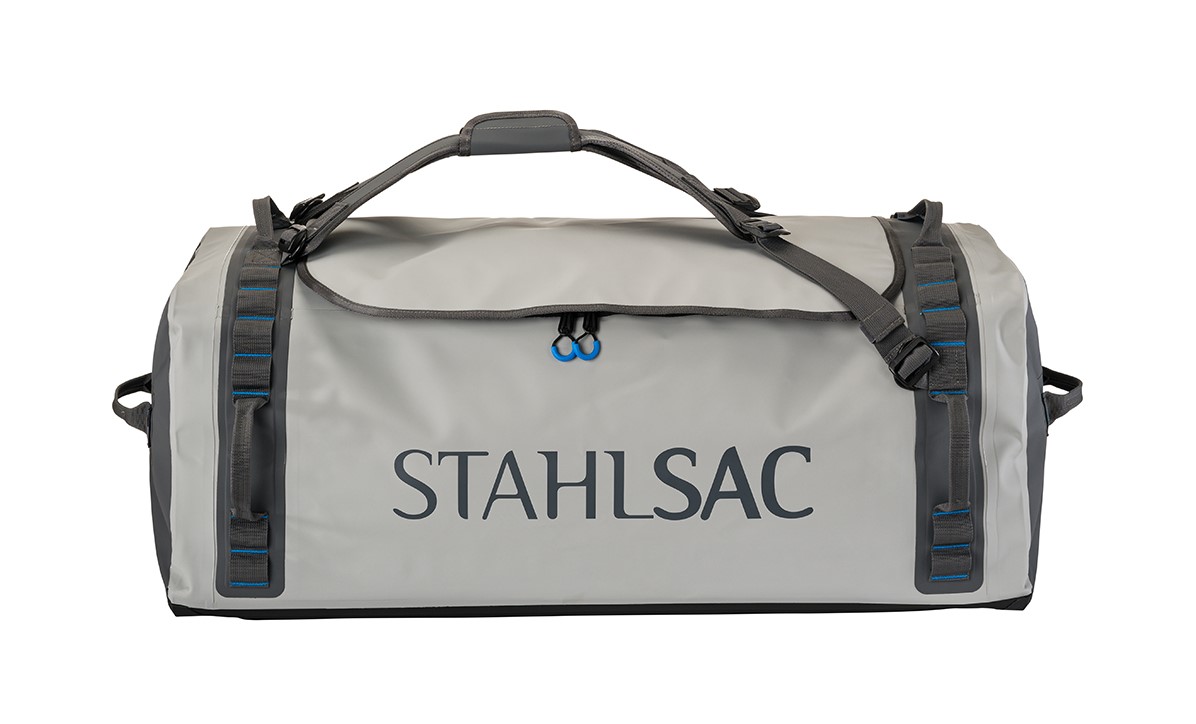
Stahlsac dive bags and travel luggage are built for our community of divers, surfers, kayakers and outdoor explorers who need bags that are constructed with durability, toughness, and 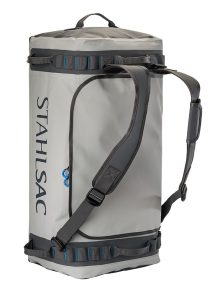 the highest quality the industry has ever seen. We were founded by one man determined to build better watersports and dive bags, and today, that mission is carried on by many. Adventure doesn’t just present itself; it requires discovery. When we design dive bags, we make sure they are tough enough for you to explore in all conditions—warm and cold, wet and dry—to the nearest and farthest reaches of the earth. And for those times you want to push the boundaries of adventure, Stahlsac dive bags make sure you can truly GO ANYWHERE.
the highest quality the industry has ever seen. We were founded by one man determined to build better watersports and dive bags, and today, that mission is carried on by many. Adventure doesn’t just present itself; it requires discovery. When we design dive bags, we make sure they are tough enough for you to explore in all conditions—warm and cold, wet and dry—to the nearest and farthest reaches of the earth. And for those times you want to push the boundaries of adventure, Stahlsac dive bags make sure you can truly GO ANYWHERE.
Abyss Duffels
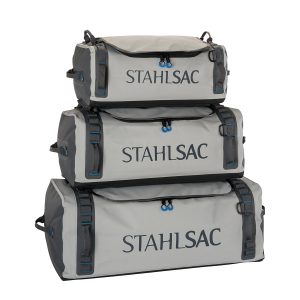 Made to be your partner-in-crime on every adventure, Stahlsac’s Abyss Duffels protects your gear from Mother Nature’s worst. Tough and 100% waterproof with double-TPU nylon material that shrugs off daily wear-and-tear, and RF-welded seams further boost the bag’s potential for lifelong exploring. Get Wet. Get Lost. Go Anywhere with Abyss.
Made to be your partner-in-crime on every adventure, Stahlsac’s Abyss Duffels protects your gear from Mother Nature’s worst. Tough and 100% waterproof with double-TPU nylon material that shrugs off daily wear-and-tear, and RF-welded seams further boost the bag’s potential for lifelong exploring. Get Wet. Get Lost. Go Anywhere with Abyss.
- A weatherproof duffel for trips, travel, and adventure
- Ultra-durable double-TPU nylon protects your gear
- Material repels water and keeps your equipment dry
- RF-welded seams are flush, tough, and waterproof
- Removable straps transform duffel into backpack
- Zippered internal stow compartments carry essentials
- External zippered flap is easy to open and close
- Welded external handles make transporting a breeze
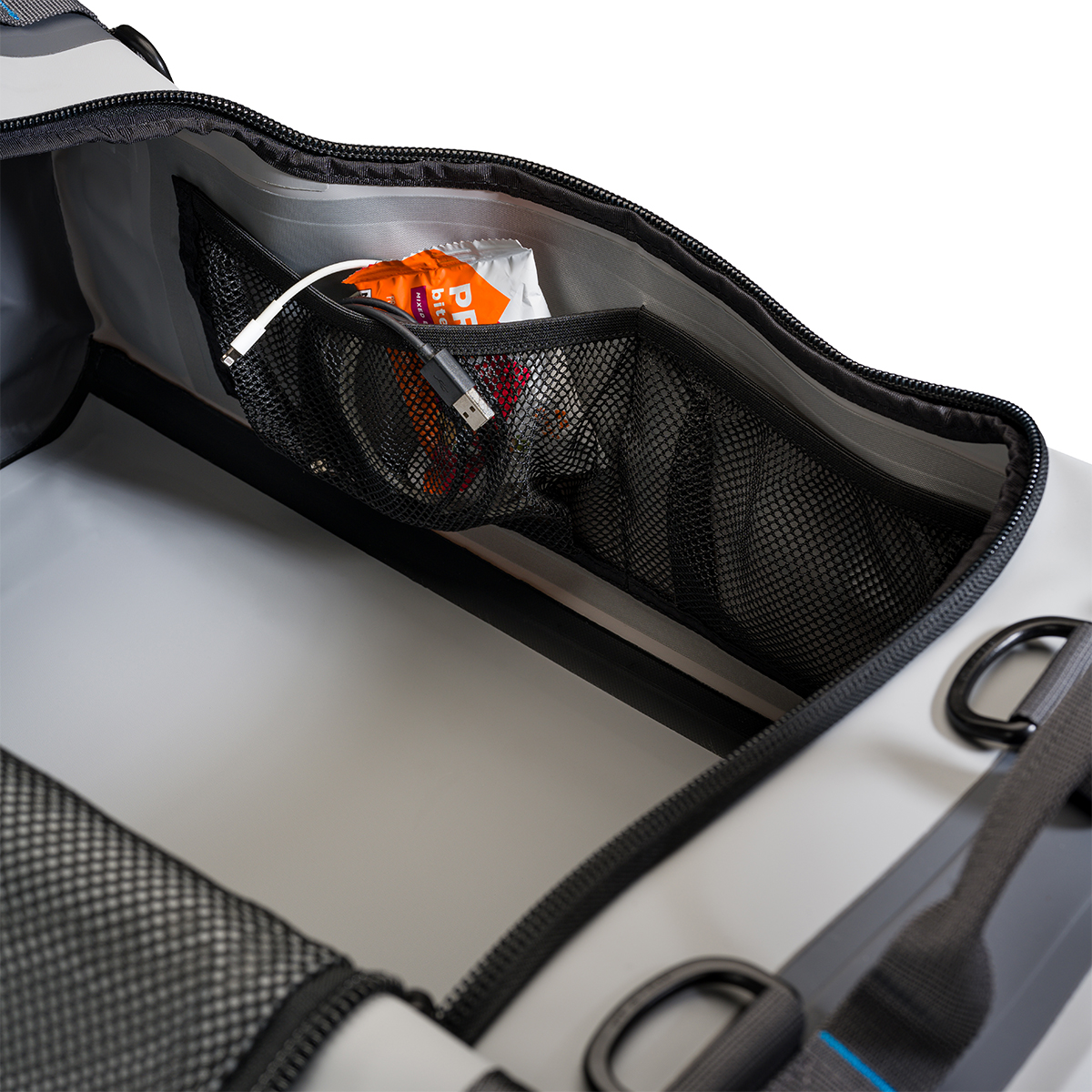
Panama Mesh Backpack
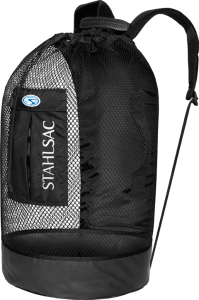 The most copied design in scuba diving, the Stahlsac Panama Mesh Backpack is the “original” design and features two high-density foam padded shoulder straps, extra durable polyester mesh, duffel bag handles and our unique zippered dry pocket inside that combines with a wet pocket outside. The bottom’s built from reinforced 18-gauge PVC nylon to combat the wear and tear of your active coastal lifestyle, and, as a bonus in every bag, we supply a 12″ x 12″ mesh drawstring satchel for extra stowing utility. Pack up your beach kit and go.
The most copied design in scuba diving, the Stahlsac Panama Mesh Backpack is the “original” design and features two high-density foam padded shoulder straps, extra durable polyester mesh, duffel bag handles and our unique zippered dry pocket inside that combines with a wet pocket outside. The bottom’s built from reinforced 18-gauge PVC nylon to combat the wear and tear of your active coastal lifestyle, and, as a bonus in every bag, we supply a 12″ x 12″ mesh drawstring satchel for extra stowing utility. Pack up your beach kit and go.
- Density foam padded shoulder straps
- Outside wet/dry pockets
- 2 Carry handles
- Tough, snag-resistant polyester mesh
- Reinforced PVC bottom
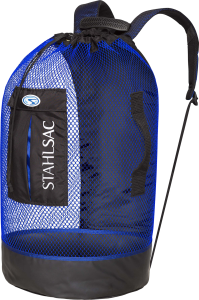
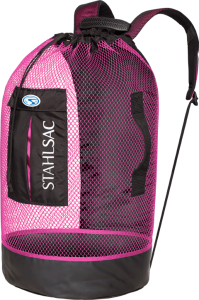
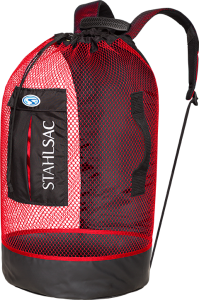
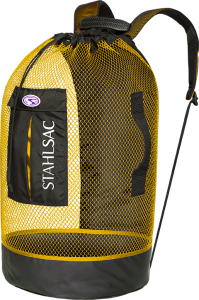
For more information about Stahlsac bags, visit www.stahlsac.com/dive-bags.
Sea & Sea is the home of Stahlsac and other leading diving brands in the UK.
Blogs
EXCLUSIVE: Jeff Goodman interviews Mark Spiers, CEO of New Scuba Diving Training Agency NovoScuba

In a video recorded exclusively for Scubaverse.com, Jeff Goodman interviews Mark Spiers, CEO of new scuba diving training agency NovoScuba.
Find out more about NovoScuba at www.novoscuba.com.
-

 News3 months ago
News3 months agoCapturing Critters in Lembeh Underwater Photography Workshop 2024: Event Roundup
-

 Marine Life & Conservation Blogs3 months ago
Marine Life & Conservation Blogs3 months agoCreature Feature: Swell Sharks
-

 Blogs2 months ago
Blogs2 months agoMurex Resorts: Passport to Paradise!
-

 Gear Reviews3 weeks ago
Gear Reviews3 weeks agoGEAR REVIEW – Revolutionising Diving Comfort: The Sharkskin T2 Chillproof Suit
-

 Blogs2 months ago
Blogs2 months agoDiver Discovering Whale Skeletons Beneath Ice Judged World’s Best Underwater Photograph
-

 Gear Reviews3 months ago
Gear Reviews3 months agoGear Review: Oceanic+ Dive Housing for iPhone
-

 News2 months ago
News2 months agoPADI Teams Up with Wellness Brand Neuro to Drive Ocean Change and Create a Blue State of Mind
-

 Marine Life & Conservation2 months ago
Marine Life & Conservation2 months agoSave the Manatee Club launches brand new webcams at Silver Springs State Park, Florida

















